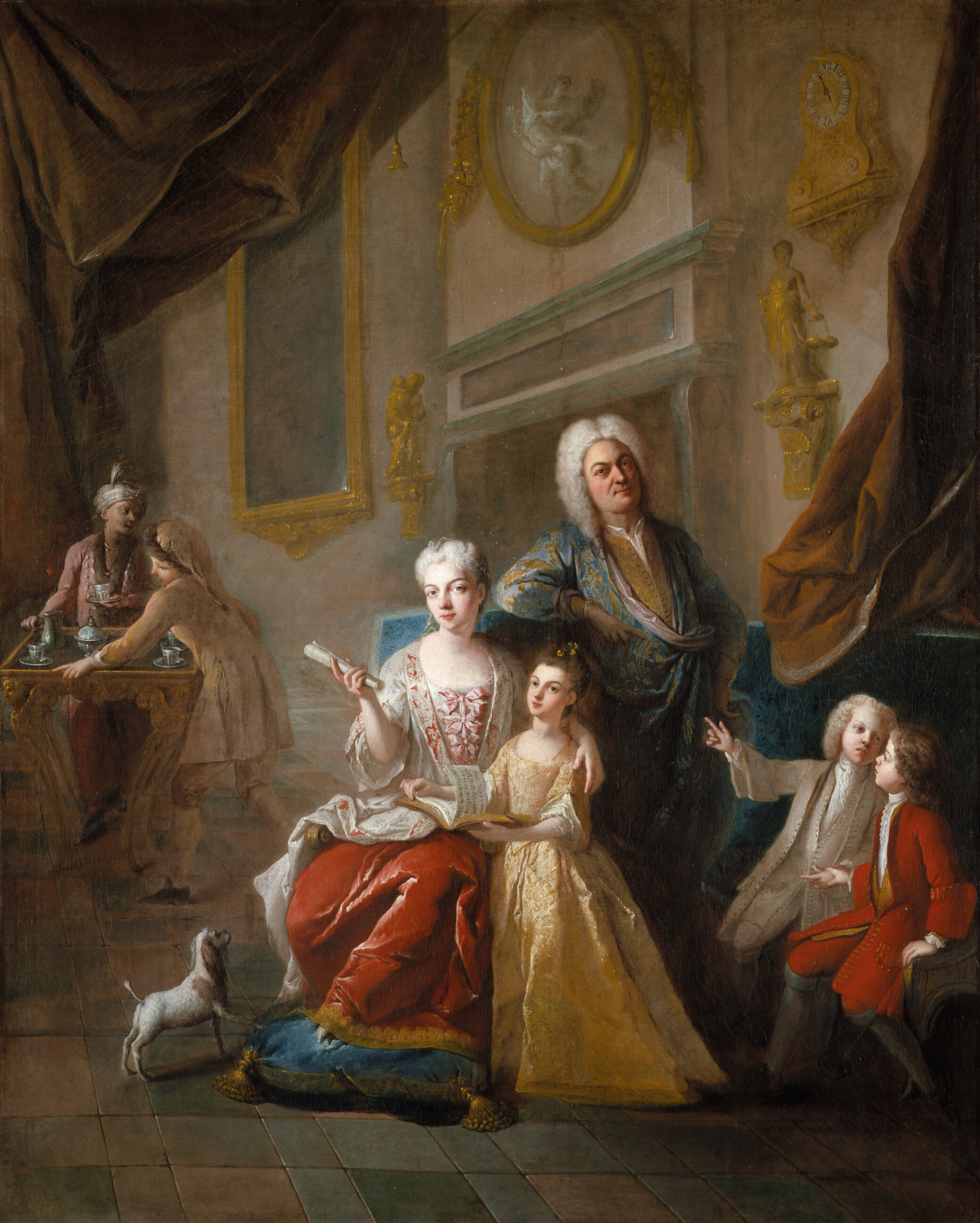
Paintings
FRANCOIS DE TROY (1645-1730)
Group Portrait of a Magistrate’s Family
French, circa 1725
Oil on canvas
63 x 51 inches (160 x 129.5 cm.)
Literature: Jean Cailleux, “Some Family and Group Portraits by François de Troy”, Burlington Magazine, April 1971, supplement p. v-vii illustrated. Provenance: Anonymous sale Christie’s London May 4, 1922, no. 100 as Robert Levrac Jean Cailleux family collection, Paris (Sold Christies, New York, October 23, 1998, # 39) Michael Rosenberg, Dallas, (Sold from his estate Christies, New York, January 26, 2005, #227) Jean Cailleux was the first to research the oeuvre of François de Troy, which has been confused with that of his son Jean-François de Troy (1679-1752). In his 1971 article (see above) Cailleux re-attributed the present painting, which had been misidentified as by Robert Levrac-Tournières, to de Troy senior, associating it with several other group portraits by the artist. The details of dress allowed Cailleux to assign it to a relatively late date in the artist’s long career. The style of the furniture and finally the dating of the silver mounts on the Chinese porcelain coffee service to 1722-27 by the noted silver expert, Jacques Helft, further narrowed the time frame. The profession of the sitter is indicated by sculptures on consoles flanking the chimney which are representations of Charity and Justice that would have been appropriate in the home of a magistrate. One might speculate that the inclusion of the unusual vignette of two young servants, dressed as a Turk and a Pole respectively, serving coffee suggest the magistrate’s involvement in foreign trade for such luxuries as the imported beverage. Clearly the magistrate is a man of means, whose considerably younger wife has produced two sons and a daughter.
François de Troy introduces novel elements of animation to his picture--the ease of the informally dressed father who leans on his wife’s chair-- the wife who gestures with a sheet of paper rolled in one hand while draping the other arm over her daughter who leafs through a musical score on her mother’s lap--the conversation between the assured older son expounding with gestures and his younger brother who listens eagerly, perched on the edge of his seat, grasping his brother’s hand--the activity of the exotic page boys moving a gilded table into the scene to serve coffee. Depicting a luxurious home animated with everyday interactions, the composition rises above the conventions of group portraiture. This development in François de Troy’s work coincides with the initial forays of the artist’s son, Jean-François, into the genre of tableaux de mode, the elegant domestic scenes for which he is famed. There was surely an exchange of ideas between father and son as Jean-François lived in the family home until his father’s death.
